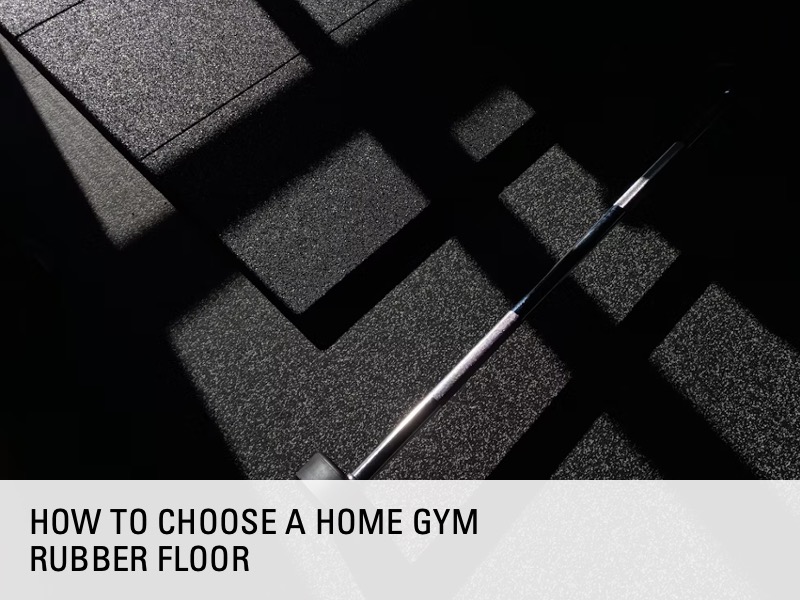How to Choose a Home Gym Rubber Floor
A home gym rubber floor is one of the smartest investments you can make to protect your equipment, support your joints, and create a professional-quality training space right in your house.
Whether you’re training in a basement, spare room, or garage, rubber flooring provides a durable and versatile foundation that withstands intense workouts and heavy equipment.
I personally use a thick, high-density rubber floor in my basement home gym set-up because I’ve found rubber flooring to be far more effective than foam for long-term use.
Rubber flooring provides better shock absorption, superior grip, and improved durability, especially when dealing with weightlifting equipment, high-intensity movement, or cardio machines.
Foam flooring may appear appealing due to its softness and affordability, but it tends to break down quickly and doesn’t provide sufficient protection for intense home workouts.
Home gyms themselves offer numerous benefits, including convenience, long-term savings, and the ability to customize your training space exactly as you want.
While the initial setup cost and space requirements may be drawbacks, using the right flooring helps maximize the value of your gym over time.
From better noise reduction to injury prevention, choosing the right home gym rubber floor can dramatically improve the performance, safety, and longevity of your entire setup while working out at home!
Benefits of Choosing Rubber Flooring for Your Home Gym
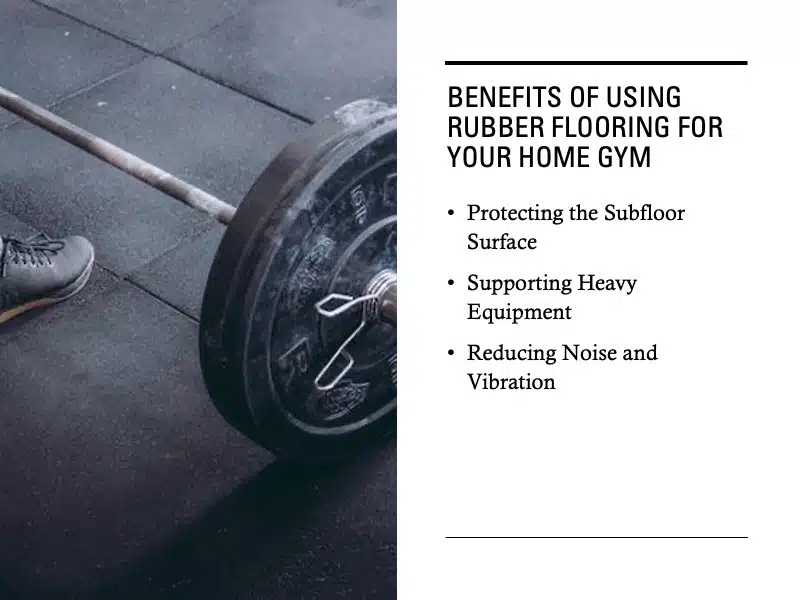
Installing rubber flooring in your home gym does more than just make the space look professional; it helps protect your foundation, preserve your equipment, and create a quieter, safer environment for training.
Whether you’re lifting heavy weights or just using a treadmill in your garage, the right rubber surface plays a vital role in both performance and long-term durability.
Rubber flooring offers superior impact absorption compared to foam or bare floors, helping reduce damage to subfloors while supporting the weight of machines and free weights.
It also minimizes vibration and noise, especially important if your gym is located above a living area or shared space.
As someone who trains in a basement gym with concrete subflooring, I’ve seen firsthand how essential it is to choose flooring that can handle both the force of lifts and the load of heavy equipment.
Rubber flooring outperforms other materials in terms of stability, safety, and sound control.
Protecting the Subfloor Surface
One of the most important functions of rubber flooring is to shield the surface underneath.
If your home gym is built over concrete, thinner mats may be sufficient, especially for bodyweight exercises.
However, if the subfloor is wood or another material prone to damage, opting for at least 3/8 inch thickness adds necessary impact absorption.
For garage gyms, which typically have concrete flooring, using mats in the 8mm to 12mm range is usually enough unless you’re performing Olympic lifts.
Dropping weights on concrete without sufficient padding can lead to long-term floor cracks or damage to equipment.
Supporting Heavy Equipment
The type and amount of fitness equipment you plan to install should influence your choice of rubber flooring.
Cardio equipment, such as treadmills or bikes, generally requires a minimum 1/4-inch mat for vibration damping and stability.
However, heavier machines, including leg presses and multi-station systems, perform best when placed on flooring that is at least 3/8 inch thick.
Using heavier flooring provides added benefits such as minimizing shifting, reducing wear and tear, and increasing the longevity of both the equipment and the flooring.
It also helps reduce structural stress on the surface below, especially in upper-level or wooden-floor home gyms.
Reducing Noise and Vibration
Rubber flooring plays an important role in sound insulation and vibration control.
If your gym is located in a shared or multi-level home, thicker flooring will help contain noise, especially when weights are dropped.
Thicker rubber mats (12mm to 20mm) are ideal for reducing sound transfer in apartments or upper floors.
Additionally, interlocking rubber tiles or rolled mats with a dense bottom layer are better suited to absorbing shock and minimizing disturbances to adjacent rooms.
What Rubber Floor Material Should You Use for Your Home Gym?
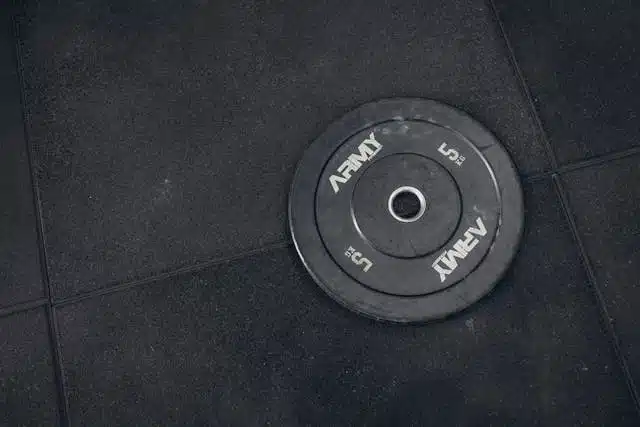
Not all home gym rubber flooring is created equal.
Two home gym rubber floor mats with the same thickness might perform differently based on density and material blend.
High-density rubber provides better protection and support even at lower thicknesses.
For instance, a 3/8-inch dense rubber tile can perform nearly as well as a 1/2-inch lower-density mat in many applications.
Some products also incorporate recycled or vulcanized rubber, which can affect performance.
- Vulcanized rubber typically offers higher durability, moisture resistance, and longevity.
- Recycled rubber mats, such as those made from tire crumb, may be more affordable but may emit odours and wear more quickly.
When shopping, consider not just thickness but also product specifications, such as density (measured in pounds per cubic foot) and user reviews regarding performance in similar gym setups.
How Thick Should A Rubber Floor Be For A Home Gym?
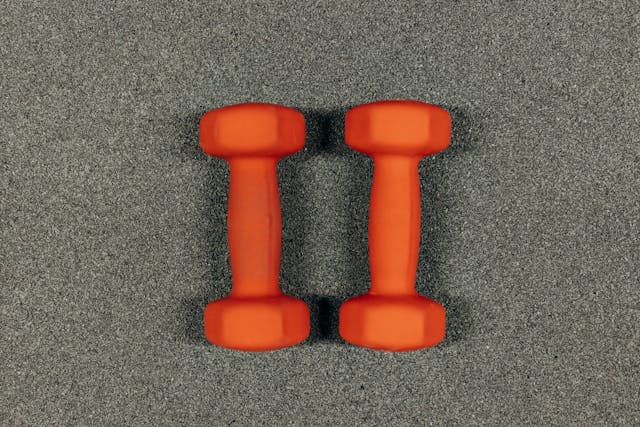
The thickness of rubber gym flooring should align with your primary gym activities. For light workouts, such as mobility training, stretching, or bodyweight exercises, a rubber flooring thickness of around 5/16 inch (8mm) may be sufficient.
It provides comfort and surface grip without needing heavy-duty shock absorption.
- For moderate weight training involving dumbbells or resistance machines, a thickness of 3/8 inch (9.5mm) is more suitable. This mid-range option provides sufficient cushioning to protect the subfloor and mitigate noise during moderate impacts.
- Heavy lifting areas or setups with squat racks, barbells, and power cages typically require 1/2 inch (12mm) or thicker rubber.
- For Olympic lifting or regular heavy deadlifts, 3/4 inch (19mm) or thicker mats are often used to prevent damage from repeated high-impact drops.
Different types and thicknesses of rubber flooring are available depending on the use case.
For reference, you can find a range of rubber gym flooring at Fitness Avenue, which includes both thinner options for light training and thicker mats suitable for heavier equipment.
Final Thoughts: Keys to Choosing the Right Home Gym Rubber Floor
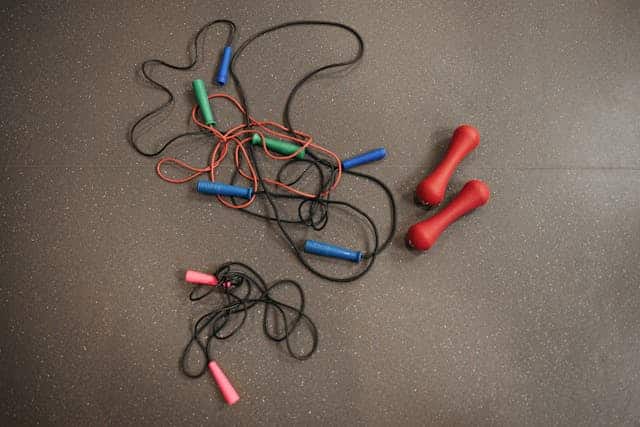
When considering the pros and cons of working out at home vs training in the gym, investing in the right home gym rubber floor ensures you’re not sacrificing safety, performance, or durability just because you’re training in your own space.
Selecting the right home gym rubber floor comes down to balancing your current workout style, the equipment you plan to use, and the type of subfloor in your space.
Light activity zones may only need 5/16-inch mats, while heavy lifting setups should prioritize 3/4-inch or thicker flooring for maximum impact protection.
For most setups, a 3/8-inch home gym rubber floor provides the optimal balance of durability, noise control, and cost-effectiveness.
It’s thick enough to protect your home and your gear, but still flexible for future upgrades.
As your training evolves, make sure your home gym rubber floor can keep up, because the foundation of a great home gym starts from the ground up.
This website does not provide medical advice. This website site does contain affiliate links, and purchases may earn a commission.
Read my Medical Disclaimer, Review Disclaimer, and Publishing Policies for more details. Use of this site indicates acceptance of these terms.

